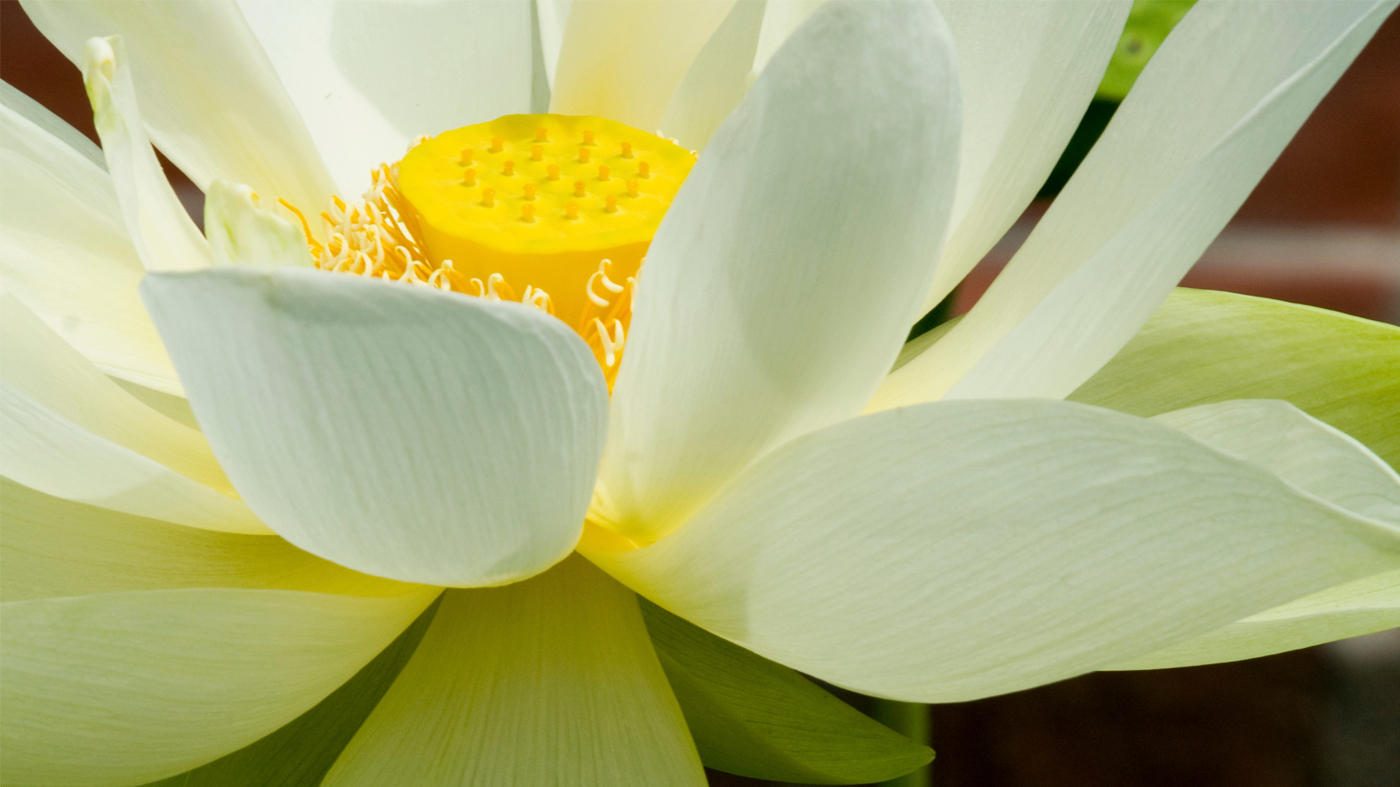

Lotus, American Yellow
Nelumbo lutea

Nelumbo lutea, the American yellow lotus, is the only lotus native to the United States. Hardy from Zones 4 to 11, it grows naturally in large ponds and lakes as far north as Ontario and south to Texas and Florida.
Our true American native is not to be confused with the Old World lotus, Nelumbo nucifera, the sacred lotus of the Nile, which was introduced to Egypt in 523 by the Persians. This species is revered by Buddhists and Hindus alike, and the seeds, rhizomes, and leaves are an integral part of the Asian diet.
Interestingly enough, one of the best and most popular lotus cultivars now grown in aquatic gardens is 'Mrs. Perry D. Slocum' — the beautiful result of a cross between the New World's Nelumbo lutea and a lovely Old World cultivar, 'Roseum Plenum'.
Planting
The American lotus, like all lotuses, thrives in warm weather and plenty of sunshine. Two to three months of temperatures between 75 and 85 degrees are necessary to produce its huge leaves and waxy yellow flowers. Too little light and not enough heat will result in foliage, often yellowing, with no blooms.
When grown in the wild, the yellow lotus has free run of whatever waterway it inhabits. It is extremely aggressive, and its many runners will produce more and more tubers in the late summer and fall. When grown in home gardens, unless placed in a container it will take over a pond. Gardeners whose ponds are located close to streams or lakes might want to avoid planting the native lotus. Its aggressive nature is furthered by its ability to reproduce through runners, tubers, and seeds. The seed dispersal might pose a problem with nearby waterways.
Lotus rhizomes should be planted in early spring, when water temperatures are in the 50s, before the rootstock develops its runners. It’s important to plant the rhizome in a round container of rich soil with ½ inch of rinsed gravel on top of the soil. The tuber’s growing tip should be exposed ½ inch. Plant gently, and be sure not to injure the growing tip at this time. Failure to bloom and other growing abnormalities are often blamed on a damaged growing tip. Submerge the container in your pond with 2 to 3 inches of water over it.
When newly planted in the spring, the tuber will send up its first set of leaves about two to three weeks later. These first leaves are like lily pads — round, flat, and floating on the water. The true leaves will emerge later, uncurling from a tightly wrapped sharp spike elevated high above the water’s surface. These leaves, resembling upside-down umbrellas, are 2 feet wide and 3 feet tall. And finally, rising above all this mass of wavy-edged velvet foliage come the flower stalks, bearing showy, creamy yellow flowers.
Lotus flowers typically open in early morning and close by midafternoon. After three days, the petals fall off, revealing a soft yellow seedpod covered with small holes containing the round, long-lasting seeds. Over a period of time, the distinctive seedpod expands in size and dries to a hard brown finish. Then the pods are often harvested to be dried for floral arrangements.
Because it is such a vigorous grower, lotus requires regular fertilization. One fertilizer tablet (per gallon of soil) every two to three weeks will suffice. Although Nelumbo lutea is hardy, its crown must never freeze solid. After a light frost or two in fall, cut the plant off at the soil line. It can either be placed at the very bottom of your pond, where the crown won’t freeze, or it can be stored in its pot in a cool, dark location where it can be kept moist.
The following spring, return the pot to your pond when the water temperature is in the 50s, and let the plant warm up with the pond. If your lotus is actively growing, wait until the water temperature is 75 degrees before putting it into the pond. A growing lotus will be shocked in 50-degree water and will either flower quite late or not at all.
From the unfurling of its giant leaf spikes through the decorative seedpod's drying, this "peony of the water garden" is a lovely sight at all stages of its growth.

